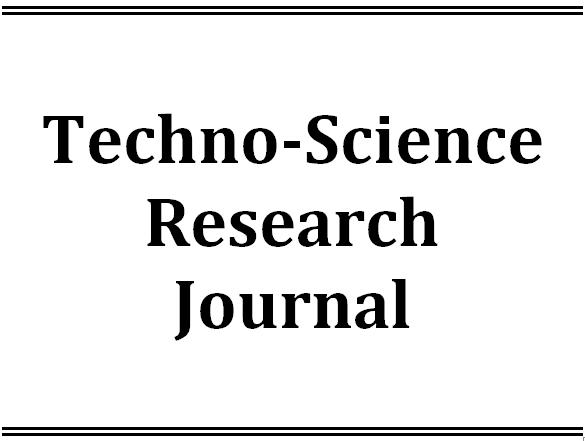Latest Issue
Empowering Education with Online Khmer Handwritten Text Recognition for Teaching and Learning Assistance
Published: August 30,2025Undergraduate Student Dropout Prediction with Class Balancing Techniques
Published: August 30,2025Status of Seawater Quality at Koh Rong Island, Sihanoukville, Cambodia
Published: August 30,2025Low-Complexity Detection of Primary Synchronization Signal for 5G New Radio Terrestrial Cellular System
Published: August 30,2025Word Spotting on Khmer Printed Documents
Published: August 30,2025Tuning Hyperparameters Learning Rate and Gamma in Gym Environment Inverted Pendulum
Published: August 30,2025Examining Passenger Loyalty in Phnom Penh Public Bus System: A Structural Equation Modelling Approach
Published: August 30,2025Prediction on Load model for future load profile of Electric Vehicle charging demand in Phnom Penh
Published: August 30,2025Economic Study on Integrating PV-DG with Grid-Tie: Case Study in Cambodia
Published: August 30,2025Effect of Organic Acid and Commercial Washing Solutions for Bacteria Removal from Lettuce Collected from Market in Phnom Penh
-
1. Faculty of Chemical and Food Engineering, Institute of Technology of Cambodia, Russian Federation Blvd., P.O. Box 86, Phnom Penh, Cambodia
2. Research and Innovation Center, Institute of Technology of Cambodia, Russian Federation Blvd., P.O. Box 86, Phnom Penh, Cambodia
Academic Editor:
Received: June 30,2023 / Revised: / Accepted: October 03,2023 / Available online: June 30,2024
Lettuce (Lactuca sativa) is a green leafy vegetable popularly consumed fresh without prior cooking, potentially posing a health risk if poorly handled. For this reason, washing is crucial for reducing contaminated microorganisms before consumption. There are many commercial washing solutions in the market. Yet, their effectiveness remains unclear. This study aimed to evaluate and compare the efficacies of different washing solutions, such as single-use of organic acid citric acid (CA) and acetic acid (AA), two commercial washing solutions (CWS-A and CWS-B) purchased from the market, and Deionized water (DW). The lettuce samples in this study were purchased from Kilo 4 market and Samaki markets in Phnom Penh on the day of an experiment by randomly selecting from different vendors. The acetic acid solution (v/v) and citric solution (w/v) were used to wash lettuce samples at concentrations of 1, 2, 4, and 5% ; CWS-A (citric acid, sodium chloride, lemon flavor, and water), and CWS-B (acid acetic, citric acid, sodium chloride and water). The viable bacteria count was enumerated on Luria Bertani agar to determine the concentration of viable bacteria before and after washing with the different washing solutions for 10 min at static conditions. Unwashed samples were used as a control. The average initial level of viable bacteria counts by unwashed lettuce sample was 6.14 log CFU/g. After washing for 10 min, the viable bacteria count showed that organic acid as acetic acid at 1, 2, 4, and 5% was reduced by 1.95, 2.79, 3.6, 3.7 log CFU/g, respectively, and citric acid at 1, 2, 4, 5% were 1.55, 1.73, 3.3, 3.6 log CFU/g, respectively. Furthermore, the result of a commercial product of CWA was reduced to 1.1 log CFU/g, and CWB was reduced to 1.39 log CFU/g. Among all washing solutions, organic acid as acetic and citric acid at 4 and 5% concentrations were more effective than other tested solutions for reducing viable bacteria count.

